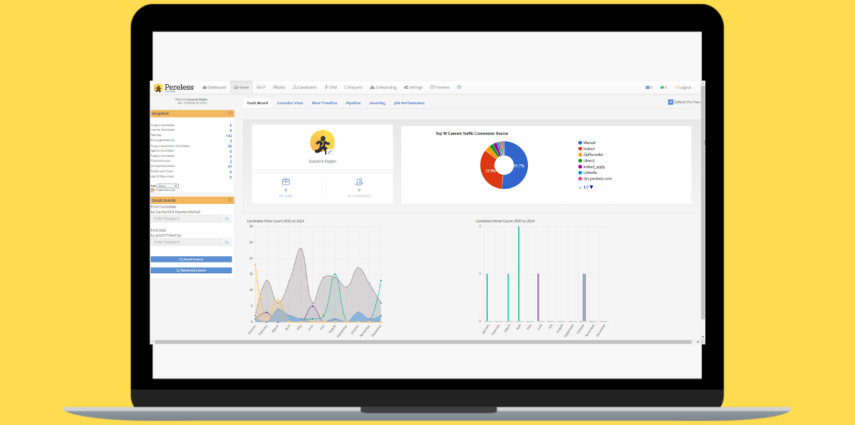In the digital age, customer service has evolved dramatically. What used to be a simple phone call to a representative has now transformed into a variety of options—some more convenient than others, and some more frustrating. Whether you find yourself waiting for minutes—or even hours—in a queue or speaking with an AI bot that doesn’t quite understand your request, customer service has become a mixed experience for many.
But what does the future hold? Should we accept long waits as a norm, or are AI bots truly the solution? Let’s explore the pros and cons of each, and what customers really want from customer service today.
The Queue: A Dying Tradition or Necessary Evil?
Remember the days of calling a customer service number, only to be greeted by an automated message: “Your estimated wait time is 20 minutes”? It’s a scenario that nearly everyone has faced at some point. While queues have been a staple of traditional customer service, they come with significant downsides.
The Frustrations of Waiting
The biggest issue with queues is simply the wait. Long wait times can be incredibly frustrating, especially when your issue is time-sensitive. It often feels like your time is being wasted. And as the wait drags on, customers are left with nothing to do but listen to repetitive hold music or, worse, a never-ending loop of disclaimers.
The Call Center Dilemma
Customer service teams at call centers are often understaffed or overwhelmed by the volume of requests, which exacerbates the wait times. While most companies try to improve response times, it’s not always feasible to staff enough agents to meet the high demand, especially during peak periods or after hours.
However, some organizations are finding innovative ways to improve the queue experience. Offering a callback service, where a representative will return your call at a later time, can reduce the pressure of waiting on hold for hours. This method, although not perfect, helps balance customer service expectations with resource limitations.
AI Bots: The Rise of Automation
As businesses strive to improve the customer service experience, AI bots have become an increasingly common solution. These bots are designed to handle a wide variety of queries—often with quick responses and without the need for human intervention. AI bots can be found on websites, within apps, or integrated into social media platforms.
The Benefits of AI Bots
- Instantaneous Response: One of the most significant benefits of AI bots is that they can provide an immediate response. If you need basic assistance or have a simple question, bots are able to respond instantly, eliminating the need to wait in long queues.
- 24/7 Availability: Unlike human representatives who work within specific hours, AI bots can be available around the clock. This is particularly beneficial for businesses that operate internationally or in industries where customers expect assistance outside traditional working hours.
- Efficiency for Repetitive Queries: AI bots excel at handling routine inquiries. If your question is common, like “Where is my order?” or “What are your business hours?”, the bot can instantly provide the answer. This frees up human agents to handle more complex, unique, or sensitive issues.
- Reduced Human Error: AI bots don’t have the fatigue or human errors that may come from a long shift. They can give consistent and accurate responses based on the data they’re programmed with.
The Downsides of AI Bots
While AI bots have made customer service more accessible, they’re far from perfect. Many customers feel frustrated when bots don’t understand their questions or give irrelevant answers. For complex issues, the impersonal nature of AI can make interactions feel cold and robotic—literally.
Additionally, AI bots have limited empathy. A bot might give a factual answer to your problem, but it cannot console you if your issue is more emotionally charged or requires nuanced understanding.
For many people, the frustration with bots comes when they cannot solve the issue or when they “escalate” you to a human representative—who may ask you to repeat everything you just told the bot. In those cases, customers feel like they’re wasting time and energy.
What Do Customers Really Want?
So, what do customers truly want from customer service? The answer is clear: convenience, efficiency, and empathy.
- Convenience means not having to wait in a long queue or be forced to navigate endless chatbot scripts.
- Efficiency means getting the right answer or solution quickly, whether through an AI bot or human representative.
- Empathy means being understood as a human, especially when the issue is complicated, urgent, or sensitive.
There is no one-size-fits-all answer when it comes to customer service. While many appreciate the speed of AI bots for quick queries, others prefer the reassurance of speaking to a human who can understand the nuances of their issue.
Striking the Balance: AI Bots + Human Agents
The ideal solution for most customers lies in a hybrid model. AI bots can handle the repetitive, time-sensitive tasks, leaving human agents to focus on more complex issues that require empathy and problem-solving skills. This system allows customers to be routed to the right place, faster, while maintaining the personal touch when necessary.
For example, companies like Amazon and federal banks use AI bots for basic inquiries, like order status or account information, but have human representatives available to deal with specific, complicated, or emotional issues.
Looking Ahead
As artificial intelligence continues to improve, it’s likely that customer service will continue to rely on AI bots, but the human element will never be fully replaced. Instead, the two will coexist—AI will help optimize customer service by making routine interactions more efficient, and humans will step in when expertise and empathy are needed.
Ultimately, the best customer service will be a blend of technology and human care—one that listens, understands, and responds swiftly and effectively to every customer’s needs.
Queue or Bot? The Ultimate Debate on Customer Service in the Age of AI March 5th, 2025Pereless



